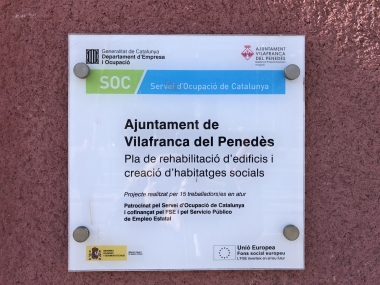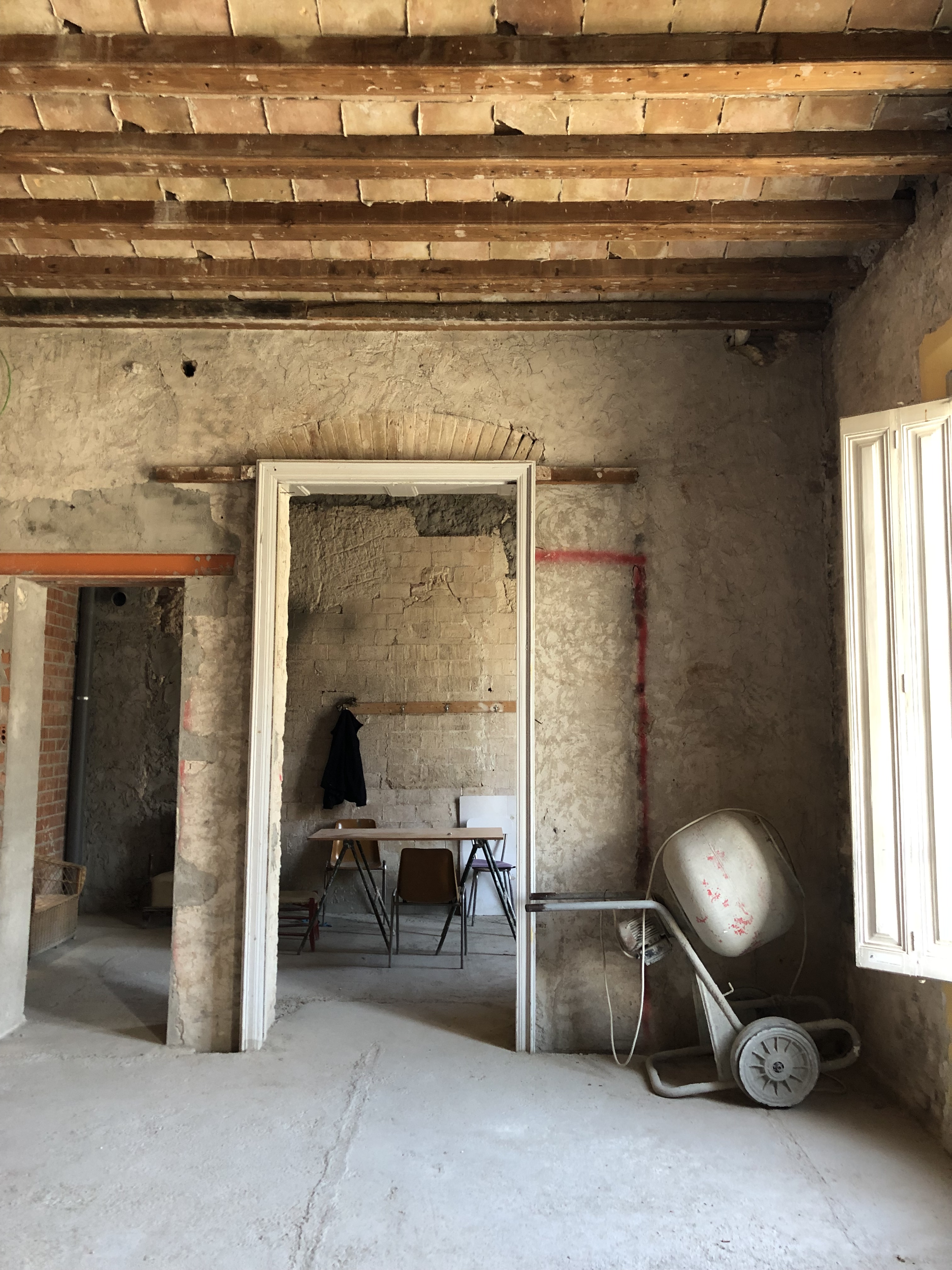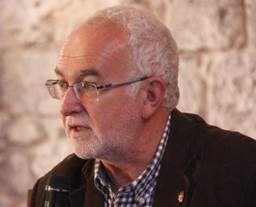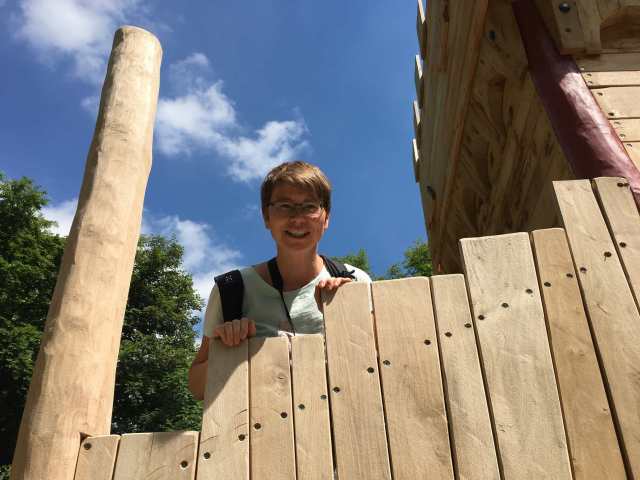Restoring Vilafranca del Penedès - a transfer story from Catalonia
Edited on
07 May 2021Jordi Cuyàs reports on the transfer within the ALT/BAU network and on the cooperation with another URBACT Good Practice in Vilafranca del Penedès. The story begins back in 1979.
With the re-establishment of democracy and the first free municipal elections in 1979, Vilafranca del Penedès, like the rest of the country, was able to face up to the resolution of the basic problems of the city, such as education, hospital care, improvement of the historical and commercial centre.

Moreover, it was now possible to lead housing from the perspective of the city and not from the perspective of the state that had been responsible during the dictatorship. As we were in a time of growth, we worked to make a new promotion of public housing and to rehabilitate those that were in poor condition, especially in the historic centre where all public spaces were improved.
The global economic crisis ten years ago introduced some changes, since new public construction was stopped with the slowdown in population growth and the participation of people with serious social problems was put as the central axis of the rehabilitation. And that is where the "Vilafranca Inclusion" project was born.
URBACT Good Practice in Vilafranca del Penedès
Vilafranca was very satisfied with its project “Vilafranca Inclusion” which was considered a Good Practice by the Diputació de Barcelona first and then by URBACT in 2017 because it not only affected the recovery of empty housing but also improved the social level of the unemployed workers who participated in the rehabilitation, considering to close the circle. This practice, despite the good results obtained, proved to be insufficient when large homeowners got out of their properties in anticipation of future price increases.


Photos from left to right: empty building in Vilafranca and an object of ALT/BAU in Vilafranca; a building in renovation
This abandonment of entire buildings has led to the disorganized and mafia occupation of housing throughout the country and also in Vilafranca; a problem that has doubled during the pandemic which also leads to social
alarm more inequalities in rights and duties and an accelerated deterioration of buildings. To all this we must add that in our country, there is no tradition of renting houses. The tradition is to buy them. The price of rents for both houses and commercial premises is usually exorbitant. We lack public housing policies when it comes to rent. Whenever the administration has invested in the construction of housing, it has been for its sale and to recover the investment as soon as possible.
URBACT Good Practice from Chemnitz...
Facing this new situation, the need to leave a project that we could consider craftwork and address a more wholesale intervention has become more evident. Through URBACT, we learned about the Good Practice of Chemnitz that via Agentur StadtWohnen Chemnitz, a public project carried out by a private company, offers a flexible and proactive approach for the revitalisation of the historic housing stock of the city, and that over time has become the central collector and distributer of information on the buildings. The Agency connects owners, potential investors or users and public authorities for the reanimation of vacant buildings or in poor conditions, so it helps to reduce speculation, to channel grant money, as well as to avoid future costs not only for the owners of decaying buildings but also for the municipal government.
…adapted to Vilafranca
To approach the problem from this perspective, it has been necessary, first of all, to change the conception of the problem on our part. Then it became necessary to expand the mere social orientation that we had, so that a structure could emerge that was more capable and start looking for private partners with enough technical capacity and sufficient financial solvency to help us move forward on this new path. In this sense the agreement signed with Habitat3 (housing for social inclusion) was very important. With Habitat3 fondation we have recovered 10 housing units so far.
The Habitat3 Foundation is a social rental housing manager whose main objective is to search for and to obtain rental housing at prices below market prices. One of the tasks linked to this objective is housing rehabilitation and dignifying through collaboration with job placement companies.
It is precisely in this sense that the example of the city of Chemnitz was highly interesting for us. With its Housing agency (Agentur StadtWohnen Chemnitz) the city of Chemnitz offers a real estate advisory service, for the search for investment for the rehabilitation of buildings in need of restoring to a habitable condition. The concept of a public-private partnership with the placement on the real estate market of entire buildings was what we needed in Vilafranca at the moment. The Housing agency Chemnitz is aimed at interested owners of dilapidated or vacant properties, future investors and users with an interest in communal forms of living and creative ideas for the subsequent use of buildings.
This new policy is not easy to implement in our county, because it involves dealing with and adopting an active housing policy that had already been done before but in recent years was done by the private market. To make it more difficult, the pandemic is hampering the direct contact between actors who need to build trust to operate, which is difficult to do virtual. At the moment we are still in the process of adapting the Chemnitz example and cannot yet report concrete results. However, it is clear that we must work in this way, especially in the city centre. Management has always been one of the key pieces in any process of rehabilitation and urban
regeneration. On a larger scale, this tool, despite requiring capacity for economic, technical and social management is more efficient and can allow operations to be unclogged with a reduction in costs. The challenge is how to achieve this funding without compromising the budget and municipal action, so collaboration between the administration and private initiative should be normal practice in a 21st century society.
The successful example of the Chemnitz Homeowners' Cooperative is another experience to study and transfer to our reality, also the student apartment building, which we got to know at the Midterm Review Meeting in Chemnitz in December 2019.
Conclusion
What we have learned from Chemnitz, especially with the visits, is that his project is POSSIBLE AND NECESSARY. The experiences of the other cities in the network have also provided us with many elements of
reflection and have enriched our perspective. Especially the temporary use of the spaces in which there is activity while it is being rehabilitated, carried out by some of the members of the ALT/BAU Network, is for us an innovative contribution on which we need to reflect on. In short, it is time, there are possibilities and the city has the capacity to do it.

written by Jordi Cuyàs
Former Strategic Projects Coordinator of Vilafranca del Penedès City Council
Former ULG Coordinator
 Submitted by sabine.hausmann on
Submitted by sabine.hausmann on
